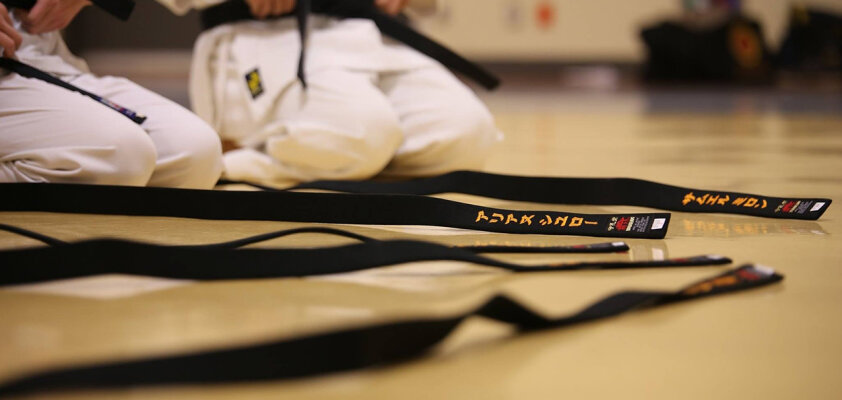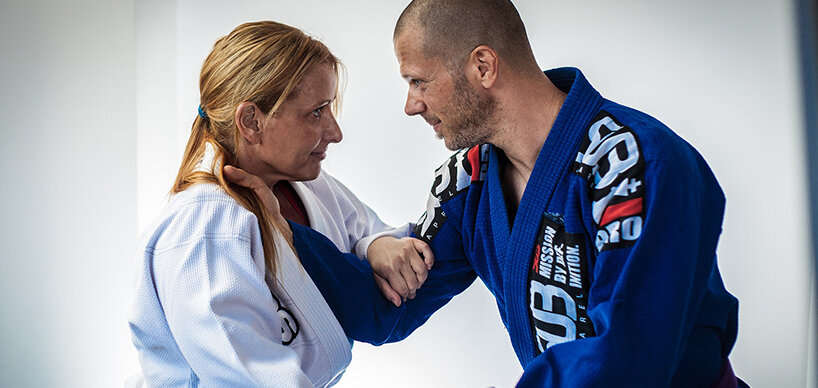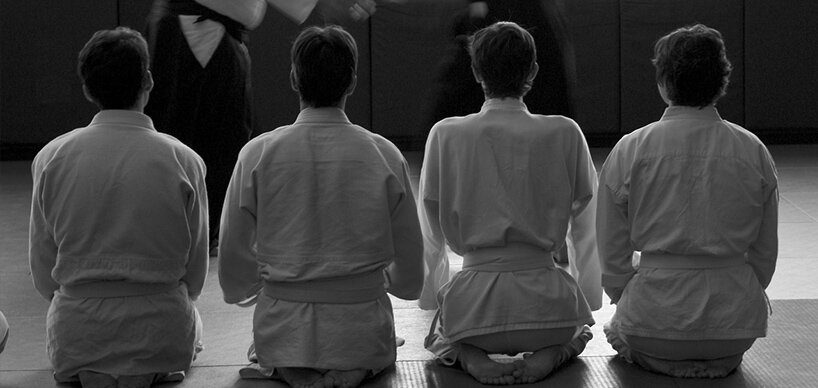Secrets of Japanese Martial Arts

Everyone knows Karate and Judo – but did you know that in its history, Japan has developed over 60 martial arts? Whether with or without a weapon: Japanese martial arts are diverse and fascinating. Its variations not only serve self-defense but also teach valuable mental skills to the student during training.

The world's oldest martial art, Kalaripayattu, originated in India and was imported to China along with Buddhism. Monks internalized its techniques and philosophy there, and then the martial art traveled from China to Japan – in the form of Jujutsu (also known as Jiu Jitsu). Many myths surround its exact origin, but one thing is clear: Jujutsu laid the foundation for most of the martial arts known in Japan today.
Each martial art has several schools or styles called Ryu. The first school of Jujutsu was officially founded in 1532, initially teaching the art of grappling. Although the name means "gentle art," Jujutsu is not to be underestimated: The martial art was developed to be able to defeat stronger opponents, utilizing their attacks at the right moment without wasting unnecessary energy. A warrior should be able to defend effectively, even when disarmed.
Jutsu means "technique" or "art," and Do means "way": This is how most names of Japanese martial arts end. A Jutsu evolves into Do with the help of mental principles and spiritual training. The philosophical aspect then becomes the indispensable foundation for the techniques, making martial arts complex, simultaneously natural, and aesthetic. The goal is not to incapacitate an opponent as quickly and brutally as possible but to direct and utilize one's resources and powers efficiently – and perhaps even find oneself in the end.
The arts and techniques of Japanese warriors and samurai, who ruled the country for eight centuries since 1185, are called Bujutsu. Even though there are no longer warriors – Bushi – today, Bujutsu lives on: in Budo. While Bujutsu taught survival and killing techniques, some had to be modified for today's "Way of War" to enable fair competition. This transformation turned the martial art into modern martial sports. Today, Budo encompasses all modern Japanese martial arts – including Sumo, by the way.
Forbidden training

Martial arts were originally not an art in themselves but a means to an end, adapting through the centuries to historical situations and various challenges. Karate ("empty hand"), for example, was developed when non-samurai in Japan were prohibited from carrying weapons – in the 17th century. This martial art, as we know it today, originated from the Japanese island of Okinawa and only reached the mainland of Japan in 1922. Since then, it has become the most well-known Japanese martial art. Although Karate is relatively young, it is one of the most dangerous and effective combat techniques in the world. One reason for this is that it is designed to defend against multiple opponents simultaneously, even if they are armed.
During the Meiji Restoration in 1868, Japan underwent many changes. Among other things, the new emperor ordered the prohibition of martial arts as the country modernized and samurai were abolished. However, the masters did not stop and continued to train and teach secretly or abroad until the Meiji era ended in 1912, replaced by the Taisho era.
During the occupation by the United States after World War II, all activities associated with the military were once again banned by the occupation government. When the occupation ended in 1951, Jujutsu experienced a new upswing in Japan. Meanwhile, new schools and techniques could also develop underground. Among them were the well-known martial arts Judo and Aikido.
Today, no martial art is banned anymore – provided that its practice does not result in injury or even death. Some "forbidden" techniques are therefore excluded from competitions as they can seriously harm participants. Japanese martial arts serve self-defense and mind training, including the principle that fighters – even in real situations – should emerge as unharmed as possible.
Secret techniques of the ninja

Another legendary group from Japan alongside the Samurai were the Shinobi, also known as Ninja. They also have their own martial art: Ninjutsu or Ninpo. Unlike in other Japanese martial arts, the focus here is not on training consciousness but on the effective execution of a mission. Ninja had to operate silently and avoid conflicts, as indicated by their name: Shinobi means "Conceal" or "Stealth" – incidentally, the meaning of the syllable Nin.
But in case a fight did occur, they had to master various self-defense techniques suitable for the situation. Taijutsu refers to the unarmed martial art of the Ninja – but handling bows, spears, and swords was also part of their training. Particularly, throwing weapons like the star-shaped Shuriken and small daggers called Kunai are associated with the Shinobi. Depending on the school, they also had to know how to swim and ride, as well as possess knowledge of meteorology and geography.
Ninja existed long before our time. Especially during feudal Japan (1185 – 1603), they were employed by the nobility and Shogun (Samurai warlords), primarily as spies. By the way, because of the Ninja, the floors in many traditional Japanese houses are made with special wood that creaks loudly when stepped on. This was intended to protect against intruders in the time of the Shinobi.
Perfection inside and out

Often, the Japanese martial art is practiced without weapons: The practitioner is expected to preempt the opponent with attentive assessment, quick reactions, and targeted use of energy. That's why empathy is crucial in martial arts, as predicting the next attack provides a significant advantage in combat. Another mental ability that plays a major role in combat is Mu – emptiness. This means freeing the mind from any distracting thoughts and mindfully following the course of events. Respect for others – the opponent, the master (Sensei), fellow students, and oneself – is also demanded in training.
Training includes not only the actual combat but also intensive preparation: bowing, greeting, and lengthy stretching and warm-up exercises to prepare the body and mind for training. For example, if training on a mat, one must bow upon entering and leaving as a sign of respect.
Various contact sports have evolved from the original martial art Jujutsu, which involves bare-handed techniques. Judo is a "gentler" form of Jujutsu that avoids direct attacks and focuses solely on throws and holds. Additionally, Jujutsu's gripping techniques were utilized to develop Aikido. In Aikido, practitioners learn how to throw an opponent to the ground and roll to the ground themselves, using the opponent's attack force against them. Originally designed to defend against a sword attack, this martial art employs the opponent's attack power against them.
In Karate, kicks and punches also play a significant role: the opponent can be attacked, controlled, and even put in a chokehold using open hand, elbow, or feet techniques. The entire body is engaged. A trademark of Karate is the famous Roundhouse Kick, or Mawashi Geri.
Martial arts with sword, stick and bow
Kendo is the globally renowned art of sword fighting. Although the swords used in training are simply made of wood or bamboo, practitioners must still wear armor called Bogu, primarily protecting the face and upper body. "The Way of the Sword" teaches mastery of various blades, from dagger to longsword. The difference from Western fencing lies in Kendo teaching self-defense through attack, with very little emphasis on parrying. The philosophical and cultural elements make Kendo a martial art, whereas fencing is purely practiced as a sport.
In Naginatado, fighters also wear Bogu. Naginata refers to a over two-meter-long polearm-like weapon with a short sword at the tip. While resembling a medieval glaive, it has its origins in the Chinese halberd.
There is also a group of martial arts practiced with agricultural tools known as Kobudo – "ancient martial arts." Weapons such as sickle, knuckle duster, trident, or the Bo fall into this category: a 121 or 181 cm long staff used in Bojutsu. It is employed for attack and self-defense against one or more opponents, requiring finesse to handle skillfully. Most of these martial arts originate from Okinawa, the birthplace of Karate.
The sword was undoubtedly the most common weapon of the samurai, but before it became the primary choice, most of them were already skilled with the bow and arrow. Kyudo, the Way of the Bow, was born in the Edo period, though this weapon had been in use long before our era. Like many martial arts in Japan, it has a philosophy based on principles similar to Zen. Achieving perfection involves relinquishing personal desires and thoughts, mindfulness, merging with the bow, and precise internalization of motor skills. However, historically, there is no connection between Buddhism and martial arts – it is a distinct mindset underlying the martial discipline.
Martial arts and everyday life

Contrary to the stereotype, not every Japanese person today masters a martial art. However, they are commonly practiced in clubs that one can join in high school and university. Even in the Meiji era (1868 – 1912), martial arts at schools served as a means to strengthen students' spirits and uphold the traditional ideal of the samurai. Even today, training remains Spartan and intense, with students often engaging in outdoor combat for hours in the summer and winter, frequently multiple times a week. Judo, Aikido, Kendo, and Kyudo are among the most popular martial arts at universities.
Other countries have also adopted techniques from Japanese martial arts. Brazilian Jiu Jitsu, for example, is a variation of the Japanese original that focuses on ruthless ground fighting. Many smaller schools worldwide have emerged, teaching their unique style and principles based on Japanese martial arts. They are managed by national and international organizations that organize competitions and establish rules, ensuring that one can officially be called a master of a martial art upon achieving a high rank.
If one wishes to learn a Japanese martial art, dedicating one's entire leisure time is not necessary. In one's free time, it becomes a way to train strength, skill, coordination, body control, concentration, and reaction speed. Ultimately, it prepares individuals for situations where self-defense may be necessary. All one needs to do is choose a martial art – Japan has something to offer for everyone!











-from-the-yakiyaki-grill-pan.jpg)




